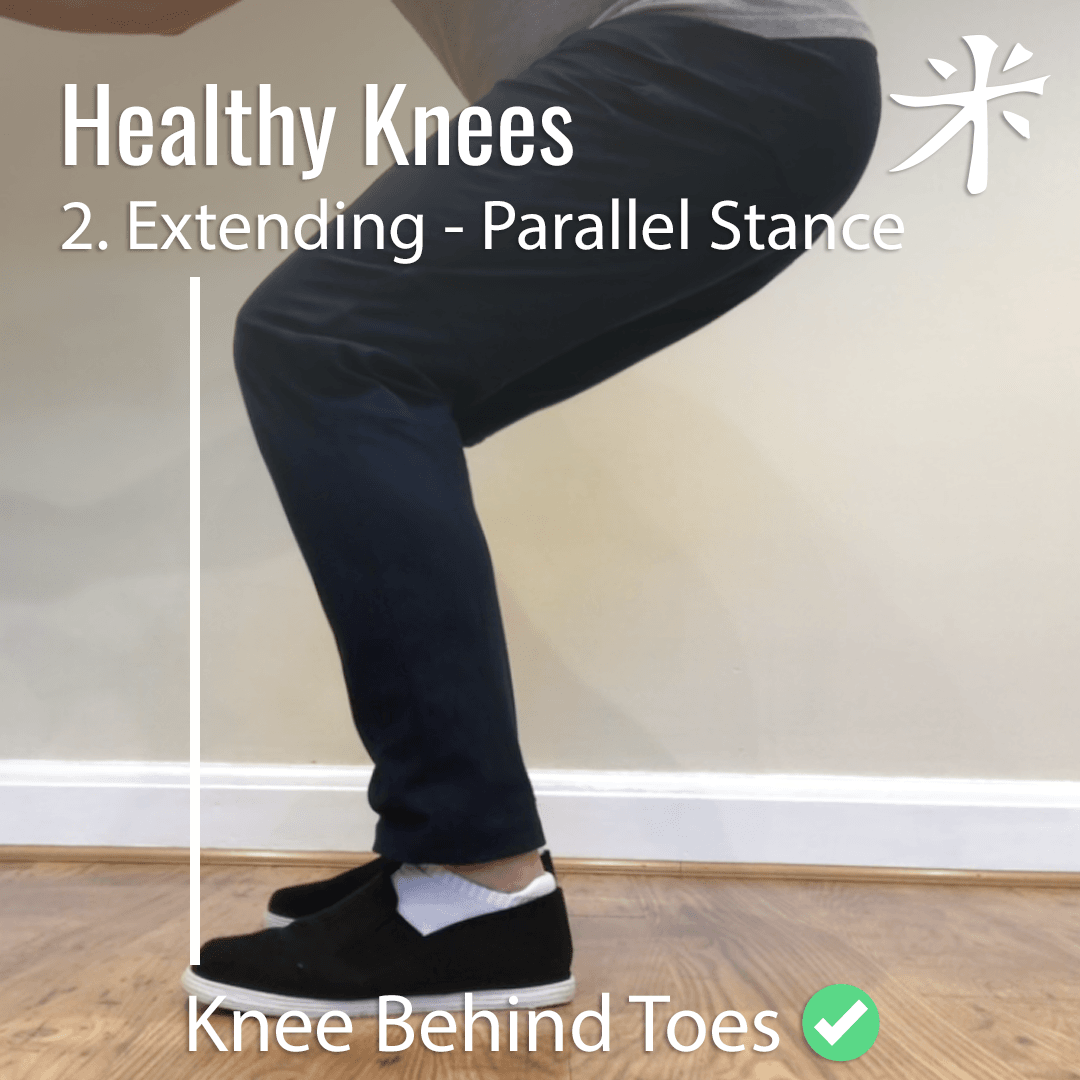08 Oct How to Keep Knees Safe in Tai Chi & Qigong

How Knees Work
The knee is a hinge joint between the thigh bone (femur) and the shin (tibia) and is designed to work in one plane: essentially forwards and back. The knee can move a small amount to the sides and these ‘ancillary’ movements are very important to the health of the joint but large movements in these directions frequently cause problems.
Knees in Qigong and Tai Chi
Both Qigong and Tai Chi are excellent ways to keep knees healthy but care needs to be taken with alignment to avoid potential problems.
Knee Tracking
When the body is moving forwards in a split stance make sure that the knee is moving in the same direction as the toes as in Figure 1 below and not inside the line of the big toe (Figure 2) or outside the line of the little toe (Figure 3). Ideally the kneecap should move towards the second or middle toe but as knees move more easily towards the inside than the outside line, I usually say ‘aim for the little toe’.



The same principle applies to the back knee – it should still track the little toe and avoid pulling inside the line of the big toe. It is particularly difficult to notice this happening – you will need to check and learn to feel when the alignment is right: as the body goes forward feel the knees moving slightly apart from each other.
Knee Extending
When the body is moving forwards in a split stance make sure that the knee stays behind the tip of the toes as in Figure 4 below and does not go beyond the toes as in Figure 5. The load on the knee increases dramatically beyond this point and so it is best avoided. Your posture also becomes more unbalanced.


The same principles apply when standing with parallel feet in Qigong exercises that sink down – make sure that the hips move backwards (as in sitting down on a chair) so that the knees do not go beyond the toes, as in Figure 6 below, and not as in Figure 7.


Turning & Twisting
Twisting, or rotating, the body in Qigong and Tai Chi can also cause problems for knee joints. In both disciplines the twisting motion should come from the rotation of the spine but the temptation is to rotate further by twisting the hips. As the knee joint can only twist by a small amount the rotating hips tend to pull the knee joint sideways and the knee ‘collapses’ inwards.
The problem occurs in both Split Stance (as in Grasp the Bird’s Tail) in Tai Chi and in Parallel Stance exercises in Qigong. Figures 8 – 11 below show good and poor alignment of knees in these situations.
The problem is difficult to spot as the knee more affected is out of sight as you turn. The problem can be avoided by becoming more aware of how the body turns – feeling the spine twist, then feeling the hips turn, then feeling the sideways pull on the inside of the knees.




Beyond Tai Chi & Qigong
These guidelines for healthy knees don’t only apply to Tai Chi and Qigong, they work for everyday life too. Be mindful of your knee alignment when walking upstairs or downhill and when carrying or pushing heavy loads – especially if twisting movements are involved.
Look after your knees and they will cause less pain and last longer.
Keep Me Posted
If you have enjoyed reading this article, then why not sign up to receive new articles as they are released?
Just let us know which subjects you are interested in, and we’ll send you the details hot from the press.



No Comments